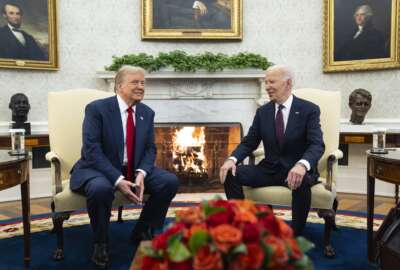Study aims at improving Congressional Web sites
In today\'s technologically advanced world, a company\'s Web site can be a help or a hindrance. It\'s the key way to get information out to citizens.
wfedstaff | June 3, 2015 1:17 pm
By Olivia Branco
Internet Editor
Federal News Radio
In today’s technologically advanced world, a company’s Web site can be a help or a hindrance. It’s the key way to get information out to citizens.
This is especially true for Congressional Web sites. The unfortunate fact, however, is that many of these sites are often outdated and hard to navigate.
Kevin Esterling, associate professor of political science at the University of California at Riverside says Web sites are something that newly elected members of Congress aren’t very familiar with.
“Most members of Congress aren’t typically the computer nerd or comp geek personality,” Esterling says, “so I think most members of Congress arrive on Capitol Hill once they’re elected without really having thought too much about web design.”
“In some sense, it’s not much of a surprise that their websites aren’t well designed just because its not something that most members of Congress spend a lot of time thinking about.”
It is not an absolute that members of Congress don’t have clear Web sites.
“There’s some members of Congress that do put a lot of effort into their Web sites but for the most part there aren’t that many that do.”
And while it may seem logical that members of Congress representing typically technological areas such as the Silicon Valley will have better websites, Esterling says this is not always the case.
“Members of congress from rural districts actually have a real need to reach out to their constituents because sometimes its harder for them to reach everybody so I think all members of congress have incentives to have good quality websites.”
In order to recommend a way to provide better Web sites, Esterling used a congressional analogy.
“One (way to improve the Web sites) would be within the institution. Members of Congress are in charge of Congress and they can design the institution however they like,” says Esterling.
“For example, most members of Congress, most of them aren’t born computer nerds, and most of them aren’t born policy analysts, but years ago, Congress designed its own institution using the committee system that kind of, even though members of Congress aren’t policy analysts they become typically very well informed about issues through the committee system and hearings. So that’s an example of some sort of institutional mechanism that helps members overcome their own limitations. So that might be one recommendation is for members to be more self conscious about how do they get each other to measure up to best practices.”
One of the ways Esterling says Congressional websites can improve is through a form of accountability.
“There might be some offices that are the standard bearers, the vanguard of technology adoption so if there were some members of Congress that were very enthusiastic about website design they might set standards within the institution to show other members of Congress, this is what a good website looks like.”
“If there were lots of members of congress, or at least some of them that did that, then they might set standards within the institution that other members might mimic.”
For more information on the Brookings Institutions study on Congressional Web sites, click here.
Copyright © 2024 Federal News Network. All rights reserved. This website is not intended for users located within the European Economic Area.





